







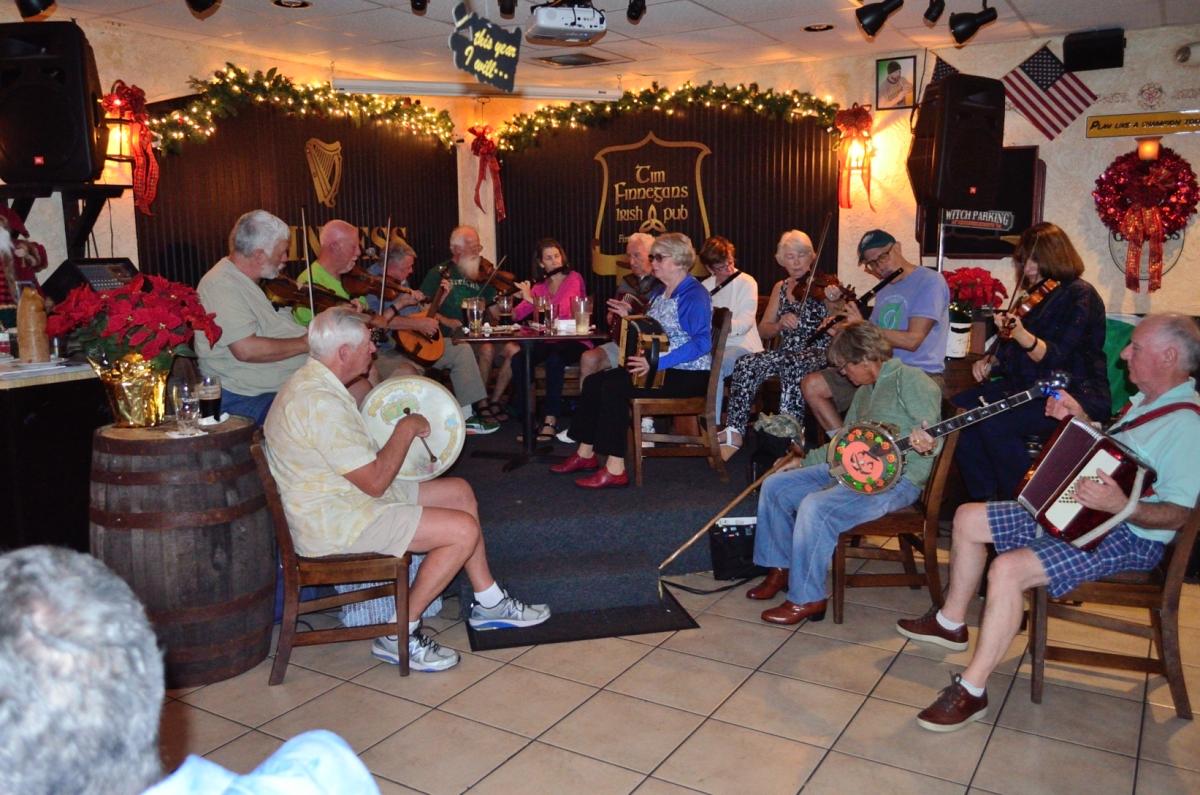
Irish Seisiún Newsletter
Thanks to our past editors - Mary Gallacher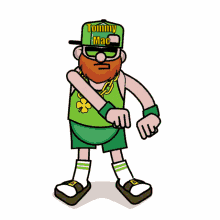 and Bill Padden
and Bill Padden
Editor Tommy Mac 
............
....Today's date and new proverb

![]()
Players Note
New set posted
Go to Players Page
![]()
Sunday's Seisiún
for October 26, 2025
‘Tá dúil ár n-anama sa cheol againn.’
Music is our soul’s desire.
.......Thanks again to
Bob Murphy, Pat Quinn, Randy Powell, Art Jacoby, and Kevin Westley
for supplying photos and info about our sessiuns.
Another fun, tune-filled seisiun at the big round-top in the back corner of the Reagan Room at our favorite pub, Tim Finnegans in Delray Beach.
In attendance were: Fran, Art, Jeff, and Bob on fiddles, Rosemarie on flute and tin whistle, Tom on bodhran, and Randy (that's me!) on bouzouki.
Tunes included: Miss Thornton's, and My Love Is In America; Eleanor Neary's; Devaney's Goat, Galway Rambler, and London Lasses; Father Kelly's #1, Father Kelly's #2, and Reddigan's; Ryan's Slip Jig, Drops of Brandy, and Foxhunt; Chief O'Neill's Favourite, Kitty's Wedding, and Home Ruler; Trip to Durrow, and Sligo Maid; Morrison's, Gallagher's Frolic, and Kesh Jig; Cooley's, and Gan Ainm; Scholar's Reel; Old Hag You Have Killed Me, and Dinny Delaney's; The Mist Covered Mountain, The Flax in the Meadow, and The Rose in the Heather; John Brennan's, The Knotted Cord, and Tinker's Daughter; Hawks and Eagles; Terry Teehan's, and Her Long Dark Hair Flowing Down Her Back; Haste to the Wedding, and Jackson's Bottle; Ah! Surely!, and Flax in Bloom; Donneybrook Fair; The Mooncoin, and The Monaghan; Lark in the Morning, and Connaughtman's Ramble.
Got a few songs in as well including I'll Tell Me Ma, Eileen Og, and Black Velvet Band.
We also had a nice crowd of punters at the pub who enjoyed the music, the libations, and the food!
A big thanks as well to our very attentive servers Aisling and Julia.
See you next Sunday!
Randy
.
And a song from Randy
Bob no bia !
See Anita's Language column below for translation
Click any of the above logos to go to that site
.
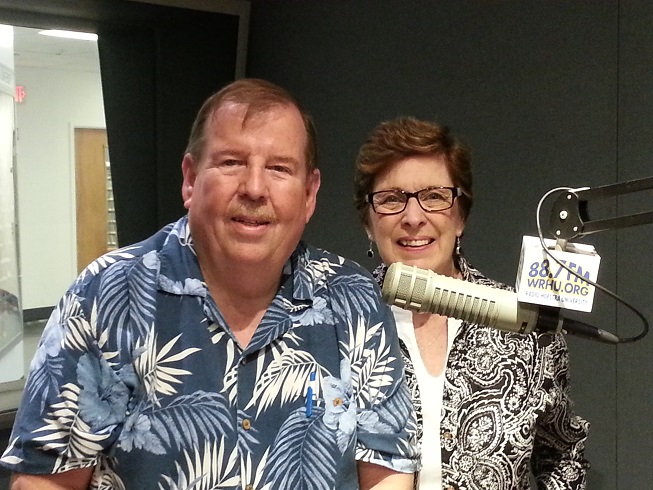 "That’s
How I Spell Ireland"
"That’s
How I Spell Ireland"
Saturdays at 7 to 8 PM EST.
You can listen on 88.7FM or WRHU.org.
For a request please text me on 917 699-4768.Kevin and Joan Westley
Note: Show will be preempted whenever the NY Islanders have a Saturday game

![]()

Finnegan's Events
Check out their calender
They support us - Let's support them

![]()

E-Mails Received

![]()
Old Ireland

Goods train passing,
Clones East, Co. Monaghan

![]()
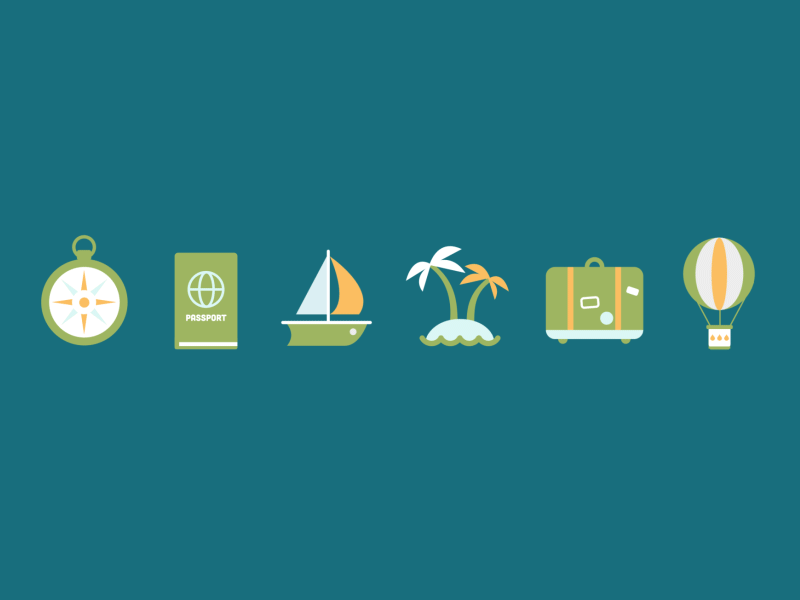
These are some of the most haunted places in Ireland to visit
From Irish castles to haunted Irish pubs and dark scary crypts - Ireland has some stellar haunted spots riddled with spooky history!
Meghan Sweeney @IrishCentral Oct 22, 2025

Kilmainham Gaol in Dublin. Would you take a stroll around these haunted locations in Ireland? iStock
Looking to get spooked for Halloween? Pay these spots in Ireland a visit!
Ireland has a long and bloody history, which means, naturally, that haunted places can be found all over the country. From castles visited by murdered spirits to pubs run by friendly ghosts, Ireland is home to an array of specters and is sure to give you goosebumps.
So light a fire, curl up to your computer, and get ready to learn all about Ireland’s scariest ghouls and ghosts.
St. Michan’s Church, Dublin

St. Michan's Church (St Michan's Church, Facebook)
St. Michan’s in Dublin is famous for many reasons. The church, built in 1095, contains the death mask of the Irish patriot Wolfe Tone and the organ on which Handel practiced his masterpiece “Messiah” before his first performance in Dublin.
The renowned Anglo-Irish philosopher Edmund Burke was christened here, while legendary nationalist political leader Charles Stewart Parnell’s funeral also took place here.
But St. Michan’s is well-known for its haunted reputation and as the home of the Mummies of St. Michan.
The dark church vaults contain remarkably preserved corpses, including those of a 400-year-old nun, brothers, and leaders of the 1798 Irish rebellion, John and Henry Sheares, and a body with severed hands and feet.
Though the cadavers in the crypt are cold and clammy, the air in the space is oddly warm, which makes it strange that many visitors report having felt icy cold fingers run down their necks as they stoop to examine the corpses.
Others say they’ve heard disembodied whispering voices around them, while others have felt a strange, cold presence.
Kilmainham Gaol, Kilmainham, County Dublin

Inside Kilmainham Gaol.
Prisons are famously haunted buildings, and Ireland’s most famous prison is no exception.
Kilmainham Gaol in Dublin opened in 1796 and is the place where the leaders of the 1916 Easter Rising were held and subsequently executed by firing squad. The building was shut down in 1924.
Today, the large and eerie jail is Ireland’s largest unoccupied prison. It was restored in the 1960s and is now a museum that’s said to be haunted by both former inmates and evil wardens.
Several ghostly tales have been told about Kilmainham Gaol. During its restoration, caretaker Dan McGill reported that lights in the prison chapel mysteriously turned on and off. During the same time period, a man painting the dungeon area of the prison was caught in a powerful gust of wind, which blew him against a wall. The man managed to fight his way out of the dungeon and emerged, his face ashen and his hands shaking. He refused to work in or even enter the jail again. Another worker was decorating the 1916 memorial corridor when he heard heavy footsteps climbing the stone stairs and walking up behind him. When he turned, no one was in the corridor, despite the fact that the footsteps continued right past him. Several children who went to tour the prison have stopped at the threshold and refused to take another step onto the grounds.
According to Dan McGill, the threatening spirits at the prison do not belong to the inmates because they are happy that their stories are being told. “The soldiers and the guards?” he would say. “Now they’re a different matter.”
Charles Fort, Kinsale, County Cork

Charles Fort (Getty Images)
Military forts, along with theaters and jails, are among the most haunted areas in many countries.
Charles Fort is Ireland’s resident military haunted site.
The fort, which was built in the 1670s, is often visited by the “White Lady of Kinsale.”
The legend goes like this: In the 1870s, Wilful Warrender was a young woman married to an officer named Sir Trevor Ashurst.
One day, Ashurst swapped places with a sentry, whom he sent to fetch flowers on his wedding day.
Wilful’s father, the commander of the fort, saw the “sentry” asleep and shot him, only realizing afterward that he had actually killed his new son-in-law.
When Wilful discovered what had happened, she leaped to her death from the battlements, prompting Commander Warrender to shoot himself.
Ever since, Wilful, the “White Lady of Kinsale,” has roamed the grounds of Charles Fort and has been seen walking through locked doors.
Charleville Castle, Tullamore, County Offaly
Charleville Forest Castle is so famously haunted that it’s been featured on shows such as Fox's “Scariest Places On Earth” and Living TV's “Most Haunted.”
Numerous paranormal investigators and psychics have visited the Irish castle, and many of its guests have reported strange occurrences during their stays.
Charleville Castle was built in 1798 for the first Earl of Charleville, William Bury, and his family. The castle remained in the Bury family until 1963, when Colonel Charles Howard Bury suddenly dropped dead.
Today, a woman named Bridget Vance owns the property and is restoring the castle to its original Gothic Revival beauty.
Castle workers say construction has awakened the spirits of Charleville. They report having heard strange whispering voices and classical music throughout the castle.
Many have also heard the sounds of children playing in a room of the castle that was once the nursery.
According to legend, a little girl named Harriet died a tragic death at Charleville while playing in the stairwell in the early 1800s.
Harriet’s ghost has been seen in the stairwell, and people have said they felt a cold breeze brush past them as they descend these steps. The little girl can be heard in rooms around the castle, moving furniture and giggling and talking.
But children aren’t the only spirits to haunt Charleville.
The famous castle is said to have been built on land that was once an ancient druid stomping ground, and the Vance family reports having seen ghostly hooded figures around the castle grounds.
Ross Castle, Lough Sheelin, County Meath
A famous Irish building steeped in history, Ross Castle is known as one of the most haunted places in all of Ireland and Britain.
Located on the shores of Lough (Lake) Sheelin, the castle was built in 1533 by the Lord of Devon Richard Nugent, a.k.a. "the Black Baron.”
The Baron’s tragic daughter, Sabina, is said to haunt the property today.
Legend has it that in 1536 Sabina met a handsome young man named Orwin, son of an O’Reilly chieftain, on a bridge on the edge of her father’s property.
The two fell in love, but they weren’t considered an appropriate match, with Sabina being English and Orwin being Irish.
So the star-crossed lovers decided to elope and took a boat out onto Lough Sheelin to escape the people who wouldn’t accept them together.
But the unpredictable lake waters got the best of them when a storm hit, and their boat was overturned. Orwin struck his head on the rock beneath the shallow lake and died, while Sabina was rescued.
When Sabina woke up three days later and saw her beloved’s body laid out in the palace chapel, she screamed a blood-curdling scream. Soon after, she died from shock, and she and Orwin were buried in a mound on the castle grounds.
Sabina now haunts Ross Castle, in search of her lost lover. Her agonizing wail is said to be still heard today around 3 or 4 a.m. in the back right room of the castle.
The Black Baron’s presence has also been reported by visitors in the vicinity of the castle on numerous occasions. The Baron is said to roam the grounds as well, grieving for his dead daughter.
Grand Opera House, Belfast
The magnificent Grand Opera House was opened in Belfast in 1895. Though the building was damaged during the Troubles, it has since been restored to its original splendor.
Several ghosts haunt the theater, though most remain unidentified.
Cast members have often seen a face looking in at them from a round window on their way down from the dressing rooms on the top floor. Opera House staff members have also reported feeling that someone was behind them when no one was there, especially while standing on stage.
Actors say they often feel like they’re being followed in the stage area, and the most commonly spotted specter at the theater is a mysterious figure in a long, black-hooded cloak, always seen on stage. Some think the ghost to be a former actor, still waiting for the curtain to go down on his final role.
The Northern Ireland Paranormal Research Association recently investigated the Grand Opera House and claims to have come in contact with the spirits of Harry and George, a pair of deceased stagehands who worked at the theater in the 1980s.
Ghost hunters have also identified an unnamed woman who used to clean the building and an anonymous electrician who worked for the Opera House.
Renvyle House Hotel, Connemara, County Galway

Renvyle House Hotel (Renvyle House Hotel, Facebook)
Today, Renvyle House in Galway is a charming rural hotel, but its guests, including William Butler Yeats, have experienced frightening ghostly happenings within this lovely home’s walls.
The hotel has an eventful history, having been burned to the ground by the IRA in the 1920s.
Before this, the famous Dublin surgeon and poet Oliver St. John Gogarty owned the property.
Several of Gogarty’s servants reported fearful “presences” in the home, and reported bedsheets inexplicably flying off beds and doors opening and closing on their own.
One night, Gogarty even experienced a ghostly presence himself.
Gogarty was woken by heavy, limping footsteps along the hallway, slowly approaching his door. He lit a candle and went to investigate the strange noises, but as soon as he entered the corridor, the flame blew out, and he was alone in the dark.
Gogarty said his limbs became heavy as if he “were exercising with rubber ropes.”
The supernatural activity at Renvyle increased when Gogarty’s close friend Yeats and his wife, Georgia, came to stay.
Yeats and his companions were sitting in the library at home when the door suddenly creaked wide open. Though his friends were terrified, Yeats raised his hand and shouted, "Leave it alone, it will go away, as it came.” The door then slammed shut.
Yeats later held a séance, in which a vapory mist appeared, and eventually assumed the form of a red-haired, pale-faced boy who looked to be about 14. "He had the solemn pallor of a tragedy beyond the endurance of a child," Georgia Yeats later said, and discovered that the boy was a member of the Blake family, who originally owned the house.
Renvyle House was soon after burnt to the ground by the IRA, but it was rebuilt, and ghosts are said to roam its corridors still today.
Grace Neill’s Bar, Donaghadee, County Down

Grace Neill's Pub (Grace Neills, Facebook)
Grace Neill’s in County Down is one of the oldest pubs in Ireland.
Built in 1611, the pub was originally known as “The King’s Arms,” but was renamed after Grace Neill, who ran the inn for many years until her death in 1918 at the age of 98. Neill was an Irish woman with a big personality and liked to keep a watchful eye on things at the inn.
But Grace hasn’t let her death interfere with her work at the pub.
A ghost of an old woman in Victorian clothing has been spotted in dark corners of the inn, and her spirit can be seen at the front bar, straightening glasses and furniture and switching lights on and off.
A strange shuffling can often be heard coming from the second floor, and some have even felt an invisible “presence” pass through them while standing near the building’s staircase.
But patrons visiting Grace Neill’s have nothing to worry about – the former caretaker of the inn is as friendly as ghosts come! Grace ran a welcoming establishment while she was alive, and continues to do so in her afterlife.
Malahide Castle, Malahide, County Dublin

Malahide Castle (Getty Images)
Many (if not all) castles in Ireland are said to have ghosts, but Malahide Castle in Dublin has an impressive five specters that roam its grounds.
The Talbot family built the castle in 1185 and owned it until 1975 – except for a 10-year period when Cromwell evicted the family and handed the property to Miles Corbett, one of the five ghosts.
While occupying the castle, Corbett committed many atrocities, one of which was desecrating the chapel of the old abbey near the estate.
The Englishman was eventually hanged, drawn, and quartered for his crimes.
It’s said that Corbett’s ghost appears on the castle grounds every year. At first, the ghostly apparition appears to be a whole soldier in armor, but eventually he is said to fall into four pieces before your eyes.
One of the other more interesting ghosts of Malahide is the Talbots' court jester during the 16th century, a man named Puck.
Nobody was laughing, however, when Puck fell in love with one of Lady Elenora Fitzgerald’s noblewomen who was staying at the castle.
Puck was found outside the castle walls one night, stabbed through the heart. Before he died, the jester swore to come back and haunt the castle. The most famous report of Puck’s ghost was from 1976 when the contents of the castle were sold off.
The jester’s “dwarf-life” ghost can also be seen in many photographs taken at the castle.
Dobbins Inn Hotel, Carrickfergus, County Antrim

Dobbins Inn (Dobbins Inn, Facebook)
The Dobbins Inn Hotel is one of Northern Ireland’s spookiest sites.
The hotel was a tower house built by Reginald d’Aubin in the 13th century.
By the 15th century, the family name had been changed to Dobbins, and many family members had become important local public figures.
In the late 1500s/early 1600s, the beautiful Elizabeth Dobbins, the wife of then-owner Hugh Dobbins, fell in love with a handsome soldier stationed at a nearby castle.
The two began an affair, which involved Elizabeth crawling through a secret tunnel behind the huge stone fireplace in what is now the hotel's reception area to meet her soldier, “Buttoncap,” for a romantic rendezvous.
Unfortunately for the lovers, Elizabeth’s husband discovered their affair and murdered them both with his sword.
In 1946, the building was converted into what is now the Dobbins Inn Hotel, which is inhabited by Elizabeth’s ghost.
Guests have been woken by the touch of an invisible hand caressing their faces.
Many others have seen a ghostly figure fly across the reception area and disappear into the stone fireplace's chimney.
Once, a waiter who was working in the hotel’s restaurant was struck in the back of the leg by a coin, but when he turned around, the room was deserted.
It seems that Elizabeth is intent on continuing her affair, and won’t let anyone stand in her way!
What's the most haunted place you've ever visited in Ireland?
* Originally published in October 2010. Updated in October 2023.

![]()
Travel Quiz
Can you identify this site and it's location in Ireland?

Answer in next week's Newsletter
Hint - It's the 'most haunted house' in Ireland
Last weeks Travel Quiz answer
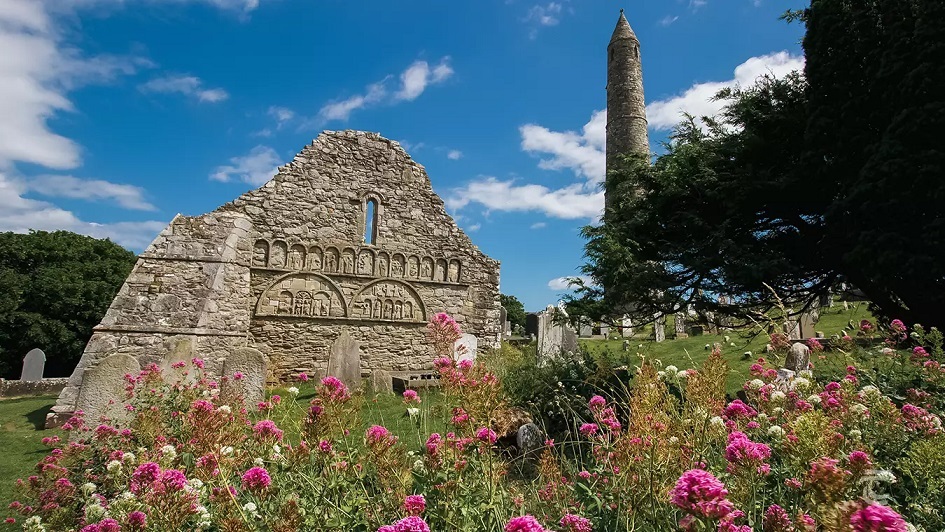
St Declan’s Cathedral and the Ardmore Round Tower •
Waterford

![]()
Irish Language
Submitted by our own Anita
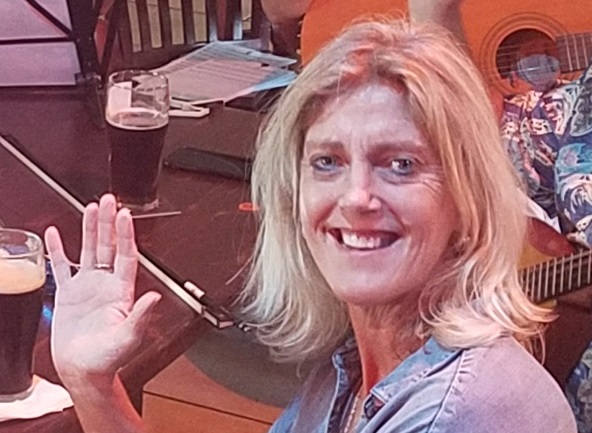
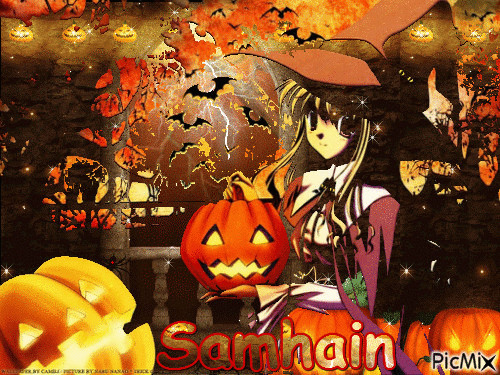
Dia duit Tom,
Samhain-Halloween
Halloween actually originates in Ireland from an ancient Celtic festival called Samhain (pronounced "sow-in). The irish language and folklore surrounding Samhain are the roots of many modern Halloween traditions.
For example, the word samhain comes from old irish meaning roughly "summer's end". It marked the transition from the light half of the year to the dark half-the Celtic New Year.
When irish immigrants came to America in the 1800s, they brought Samhain customs with them-which evolved into Halloween as we know it today. Pumpkins replaced turnips, but the irish spirit stayed the same.
Some irish words still echo in Halloween vocabulary such as puca (pronounced "pooka") a mischievous spirit, and banshee (bean-si) meaning "woman of the fairies", a wailing spirit who foretells death.
Here are cupla focail eile maidir le Samhain.
Bi curamach! (bee-coor-a-mac) Be Careful!
Bob no bia ! (bob-no-bee-a) Trick or Treat
Oiche shamhna (ee-ha how-na) Halloween night
Milseain (mill-shawn) Sweets
Oiche shamhna shona duit! (ee-ha-how-na-huna-ditch) Happy Halloween to you!
Slan go foill!
Anita
.
Have you ever wondered what something would sound like when spoken with an Irish accent?
I'm sure you've come across that problem before in your ancestry research.
With a website like Abair, now you can hear anything you want in an Irish accent!
Free Irish Classes
The classes are over zoom and are held at 12:00 eastern time the 1 st Sunday of every month.
It is basic conversational Irish and open to learners of all ages, especially beginners.
All are invited.
Hope to see you there!
slan go foill. Le dea ghui,
Anita
click here to register

![]()
 ..
..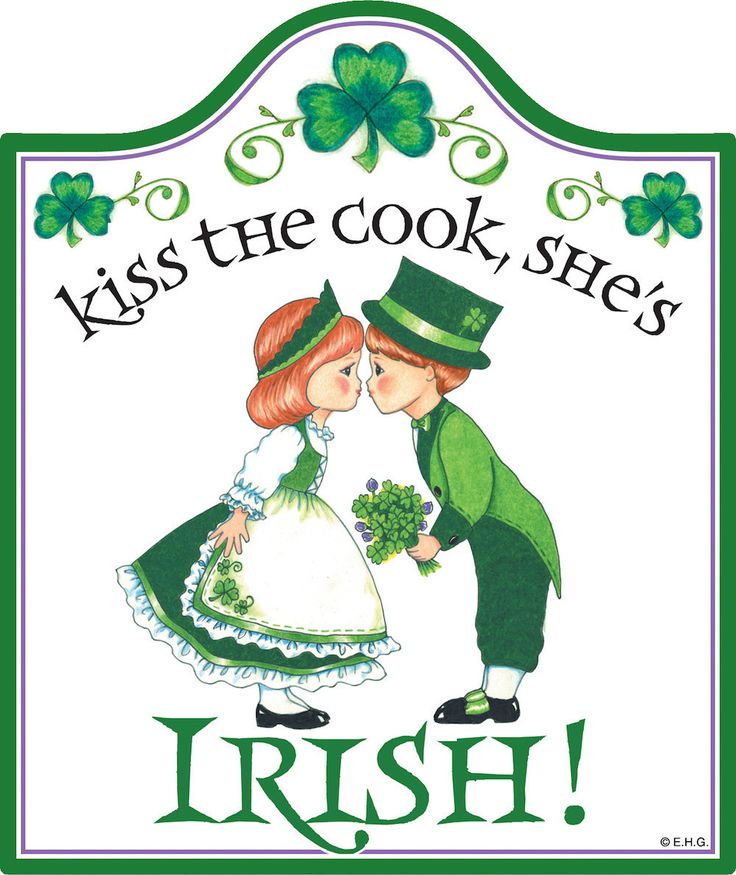
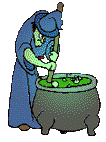
What's cooking?
Witch's Broomstick

Prep Time: 10minutes minutesCook Time: 0minutes minutesTotal Time: 10minutes minutes Servings: 10 Calories: 42kcal
Ingredients
5 pieces of string cheese
10 pretzel sticks
10 chives
Instructions
Use a kinfe to cut each piece of string cheese in half.

Cutting cheese sticks in half beside board with pretzels and chives
Cut a slice into half of the long side of the string cheese piece, to create the "frayed" broom look.

Cutting cheese stick on a plate
Make a ¼ turn of the cheese stick piece and cut through again.
Repeat two more times.
Insert a pretzel stick into the top of the other end of string cheese.

Pretzel stuck in cheese stick half
Tie a chive around the upper portion of the cheese just beneath the pretzel.

Pretzel and cheese broomstick
Enjoy
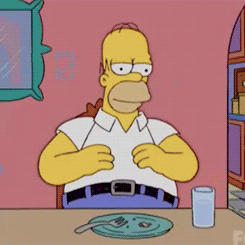
If you have a cherished family Irish recipie share it with us.
And if there's a story that goes with it.....even
better! mail click here ![]()
Fireny@aol.com

![]()
filíocht pronounced FILL-ee-uhkht meaning Poetry
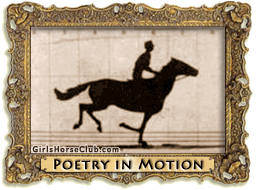
Samhain
By Annie Finch
(The Celtic Halloween)

In the season leaves should love,
since it gives them leave to move
through the wind, towards the ground
they were watching while they hung,
legend says there is a seam
stitching darkness like a name.
Now when dying grasses veil
earth from the sky in one last pale
wave, as autumn dies to bring
winter back, and then the spring,
we who die ourselves can peel
back another kind of veil
that hangs among us like thick smoke.
Tonight at last I feel it shake.
I feel the nights stretching away
thousands long behind the days
till they reach the darkness where
all of me is ancestor.
I move my hand and feel a touch
move with me, and when I brush
my young mind across another,
I am with my mother's mother.
Sure as footsteps in my waiting
self, I find her, and she brings
arms that carry answers for me,
intimate, a waiting bounty.
"Carry me." She leaves this trail
through a shudder of the veil,
and leaves, like amber where she stays,
a gift for her perpetual gaze.

Listen to Annie recite her poem

![]()
Stories and Tales
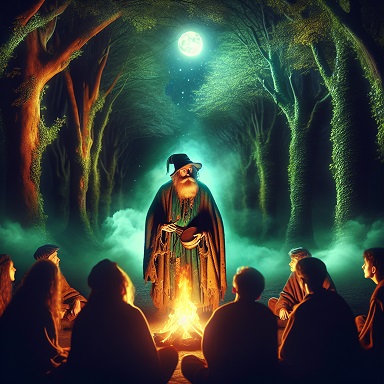
"seanchaí"
(pronounced "shan-a-key")
comes from the Irish words "sean" meaning old and "caí" meaning to tell.
Your Letter from Ireland for this week
Céad Míle Fáilte, and welcome to your Letter from Ireland for this week.
The days are drawing in now here in County Cork, and there’s a definite chill in the evening air. Darkness settles over the land by half past six, and the shops in town are already full of Halloween decorations, though many of us here still call Halloween by its older Irish name: Samhain.
I’m sipping on a cup of Lyons’ tea as I write, and I hope you’ll join me with whatever you fancy as we start into today’s letter. Given the time of year, I want to share something that perfectly captures the spirit of this season, a time when we Irish have always turned our thoughts to those who came before us.
Already a Green Room Member? You can comment on this letter in the Green Room forum here.
When the veil grows thin: Honouring our ancestors at Samhain
Some time back, I received this message from Meg in Kansas, USA. Her discovery is one that I’m sure will resonate with many of us who’ve delved into our family histories. Meg wrote:
“I’ve been searching for the final Irish resting place for my great-grandmother’s family for some time, but this has turned out to be the year of discovery! A new research cousin gave me the information I needed. The family is buried in a plot with a tall Celtic cross standing guard over their final resting place.”
What a moment that must have been for you, Meg! I can only imagine the feelings that washed over you when you finally saw that Celtic cross, knowing that beneath it lay your great-grandmother’s family - people whose blood runs through your veins, and whose stories shaped your own family’s journey.
Meg’s discovery reminds me that the time between late October and early November has always held special significance for us Irish when it comes to remembering the dead. Long before it became the commercial holiday we see today, Halloween was Samhain (pronounced SOW-in), an ancient Irish festival marking the end of the harvest and the beginning of winter, a transition into the darker half of the year.
A Time for Remembering
Our ancestors believed that at Samhain, the boundary between this world and the otherworld became thin and permeable. The dead could more easily cross over, and the living could more easily sense their presence.
But rather than being frightened by this, the Irish embraced it. We’ve never been a people to shy away from death, as you may have discovered if you've ever attended an Irish Wake!
This tradition of remembering our ancestors never really left us. Even today, throughout Ireland, families visit cemeteries in late October and early November to tend graves, place fresh flowers, and light candles. It's a time to whisper names and prayers and feel that invisible thread across generations.
Last year, we made our own pilgrimage to the old cemetery where Carina's side of the family is buried. The autumn sun was low and golden, casting long shadows across the weathered headstones. Some of those stones date back over 200 years often with simple markers, their inscriptions worn smooth by wind and rain. Yet they’re still there, standing witness to lives lived, families raised, and hardships endured.
I found myself thinking about all the descendants of those people scattered across the world now - in America, Canada, Australia, England. How many even know these stones exist? How many are searching, like Meg was, for that connection to their Irish roots?
Links in an Endless Chain
There’s something profound that happens when you discover where your ancestors are buried, when you find their names in old parish records, or finally piece together the story of how they lived and why they left Ireland.
It’s more than satisfying curiosity - it’s a kind of homecoming.
The Irish have always understood that we’re all just links in an endless chain. The people who came before us shaped the world we inherited, and we, in turn, are shaping the world for those who come after.
At Samhain, when the veil grows thin, it’s easier to feel the truth of this in your bones.
I think that’s why so many readers have written to me over the years about your family research journeys. There’s a hunger there and a need to know where you come from, to understand the struggles and triumphs of your people, to walk (even if only in imagination) the roads they walked and stand in the parishes where they stood.
Some have shared incredible discoveries with long-lost cousins found through DNA testing, family Bibles discovered in attics, emigration records that finally explained family mysteries. Others are still searching, hitting brick walls, frustrated by records that were lost or never kept in the first place.
But every single one of these journeys matters. Every name recovered from obscurity, every story preserved, every connection made across the ocean and across the years - they all matter. They keep our ancestors alive in memory, which is, I believe, a kind of immortality.
So, in this week before Samhain, perhaps take a moment to remember your own ancestors, wherever they may be buried, whatever their names may have been. Light a candle for them. Speak their names aloud if you know them.
And remember, the thin veil works both ways. If they can reach across to us, perhaps we can reach back to them too, with love and gratitude for the gift of life they passed down through the generations.
Because remembering our ancestors isn’t just about looking back, it’s also about continuing their story in our own lives.
How about you? Have you made any discoveries in your Irish family research this year? Have you found the resting places of your Irish ancestors? Let me know.
That’s it for this week,
Slán for now,
Mike.

![]()
Céad Míle Fáilte –
The Ancient Celtic Festival of Samhain.
Carina here again this week, though Mike assures me he'll be "back in the saddle" next week following his recuperation from a recent illness.
As you may know, we returned from the USA a couple of weeks ago, and it was quite striking to see Halloween decorations adorning the front of homes throughout the neighbourhoods as the trees turned to their autumn colours. So, with the season in mind, I'd like to share a letter Mike wrote last year on the Irish origins of Halloween. I do hope you enjoy!
Already a Green Room Member? You can comment on this letter in the Green Room forum here.
The Ancient Celtic Festival of Samhain.
Long before Halloween "Jack-o'-lanterns" and "trick-or-treating", there was the festival of "Samhain" (pronounced "sow-in" - where "sow" rhymes with "cow"). This ancient Celtic festival marked the end of the harvest season and the beginning of the darker half of the year. Samhain was celebrated from sunset on October 31 to sunset on November 1 and was one of the four major festivals on the Celtic calendar.
For our ancestors, this was a time when the boundaries between the world of the living and the world of the dead became blurred. Many believed that on Samhain, the ghosts of the dead could more easily come back to our world. While this might sound frightening, it wasn't seen as a bad thing. It was a time to honour our departed friends and family, but also a time when the presence of otherworldly spirits made it easier for the Celtic priests, or Druids, to make predictions about the future.
Our ancestors had many traditions associated with Samhain that you might recognise in modern Halloween celebrations. For example, large bonfires were lit on hilltops. These fires were thought to have protective and cleansing powers. There would also be great feasts for the end of harvest, where the bones of slaughtered livestock were cast into the flames of the bonfire. Another tradition was the wearing of costumes, typically consisting of animal heads and skins. This was thought to disguise our ancestors from the otherworldly spirits roaming about. The Druids practiced various forms of divination, as the thin veil between worlds made it an ideal time for predicting the future.
From Samhain to Halloween.
As Christianity spread through Ireland and other Celtic lands, the Church looked to replace pagan festivals with Christian observances. In the 8th century, Pope Gregory III designated November 1 as a day to honour all saints. The evening before All Saints' Day became known as All Hallows' Eve, which later evolved into Halloween.
However, many of the old Celtic traditions persisted, blending with the new Christian observances. This combination of old and new is a hallmark of Irish culture, where ancient traditions often underlie more recent customs.
Over time, Samhain evolved into the Halloween we know today. Many modern Halloween traditions have their roots in the ancient Celtic festival. For example:
Trick-or-treating may have origins in the ancient practice of "souling," where people would go door-to-door asking for food in exchange for prayers for the dead.
Jack-o'-lanterns come from the Irish legend of Stingy Jack, who tricked the devil and was condemned to wander the earth with a hollowed-out turnip to light his way. When Irish immigrants came to America, they brought this tradition with them, substituting the more readily available pumpkins for turnips.
Halloween costumes. As previously mentioned, these are a modern interpretation of the Celtic tradition of disguising oneself to hide from spirits.
While Halloween is celebrated in Ireland today much like it is in other parts of the world, there's still a strong connection to the old Samhain traditions. Many Irish people still call Halloween "Oíche Shamhna" (pronounced "ee-ha how-na" - Eve of Samhain). Bonfires are still lit in many parts of the country, and traditional games like bobbing for apples are played.
In recent years, there's been a renewed interest in celebrating Samhain in a more traditional manner. The Hill of Tara, an ancient Celtic sacred site, hosts a yearly Samhain celebration that draws thousands of visitors.
So, as you celebrate Halloween this year, remember its roots in the ancient Irish festival of Samhain. Whether you're carving a pumpkin, dressing up in a costume, or simply enjoying the autumn evening, you're participating in a tradition that stretches back thousands of years in ancient Ireland.
How about you? Do you have special celebrations for Halloween? Do share your own Halloween traditions with us
That's it for this week,
Slán/Bye for now,
Mike (and Carina).

![]()
Haunting Irish mugshots from 1850s home in NYC
Library Mugshots were invented so prisoners could check to see if a suspect had invented a false identity for himself when arrested.
James Wilson @jameswilson1919 Oct 21, 2025

Three unnamed inmates of Mountjoy Prison Dublin in 1857. New York Public Library.
The 1850s were one of the darkest times in Irish history. Ireland had undergone a national trauma that would scar the collective psyche of the nation for hundreds of years.
"A million dead, a million fled" is how the Famine years are remembered, and in 2017, photographs of some of the survivors were published by the New York Public Library.
The pictures in question date from August 1857 and are thought to be the oldest mugshots ever taken in Ireland, although they did not become a legal requirement until some 12 years later, when the British Parliament passed the Habitual Criminals Act.

Simon Byrne, 36, convicted larcenist.
Simon Byrne (pictured) is recorded as a 36-year-old from County Laois, the parish of Killeshin. He was thrice convicted for larceny and released early from his sentence in 1856. The following year, he was arrested again and convicted for stealing a donkey cart in Co. Carlow. He was imprisoned again, which was when his picture was taken.
As time passed, such photographs were mostly used to stop criminals using multiple aliases in order to escape being handed the longer sentences re-offenders were given.
That said, a number of the criminals featured look so young that it is difficult to picture them as criminals at all, let alone re-offenders.

Dubliner Bryan Fitzpatrick, born in 1833, convicted of larceny.
Criminals were one of the most stigmatized groups in society, and the taking of these photographs would likely have been a hugely humiliating ordeal, long before technology made mugshots available to the general public at the click of a mouse.
Mountjoy Gaol (jail), where the prisoners were housed, was considered a “progressive” institute by Victorian standards and was an all too familiar place for Irish political prisoners. Mountjoy is still used today and is the largest prison in the Republic of Ireland.

![]()
Top ancient Irish Halloween traditions
The celebration of Halloween began in Ireland in about 1000 AD, so it's no wonder that there are so many Irish Halloween traditions that continue around the world every year.
IrishCentral Staff Writers @IrishCentral Oct 12, 2025

Bonfire at Halloween!: Top ancient Irish Halloween traditions RollingNews
Halloween originated from a pagan festival called “Samhain” meaning “end of summer." The Celts believed that on the eve of Halloween dead spirits would visit the mortal world. They lit bonfires to keep evil spirits away and dressed in disguises.
Although modern-day Halloween is less about dead spirits and more about having fun and dressing up, there are some traditional aspects of an Irish Halloween that we have kept going.
Here’s a look at some of the ancient and more recent Halloween traditions from Ireland that have stuck over the years!
The bonfire
Samhain was seen as the end of summer but also the beginning of another year. It was also the one day of the year when spirits could walk the earth. The community would gather together and light huge fires to ward off bad fortune for the coming year and any evil spirits.
Some believe that people extinguished their fires in the hearth at home before they left and would reignite them using an ember from the bonfire, for good luck. The day after the bonfire the ashes were spread across the fields to further ward off bad luck for the farmers during the year.
It was also traditionally believed that the bonfire encourages dreams, especially of your future husband or wife. It was said that if you drop a cutting of your hair into the embers of the fire the identity of your first husband would be revealed.

Jack-o-lantern
There are two schools of thought on why the Irish carried Jack-o-lanterns. One is that it is an ancient Celtic tradition. In order to carry home an ember from the communal bonfire, the people would hollow out a turnip so they could walk home with the fire still burning.
The other story (which is a little more spooky) is that Jack-o-lanterns date back to the 18th century and are named after an Irish blacksmith, called Jack, who colluded with the Devil and was denied entry into Heaven.
Jack was condemned to walk the earth for eternity but asked the Devil for some light. He was given a burning coal that burnt into a turnip that he had hollowed out. Some Irish believe that hanging a lantern in their front window would keep Jack’s wandering soul away.
When the Scot-Irish emigrated to America, they adapted the tradition and used a pumpkin instead as it is more difficult to find turnips.

Costumes
The community would gather around the bonfire and would be dressed up in elaborate animal skins and heads.
The idea was that the evil spirits would be scared off by the fires. Then if the spirits happened to be wandering the earth and bumped into one of the Celts they might think they were spirits themselves because of their disguises, and let them go free. This is where our tradition of dressing up comes from.
Trick or Treat
Trick or treating originated centuries ago. In Ireland, the poor would go from door to door to rich people's homes and ask for food, kindling, or money. They would then use what they collected for their celebrations on Halloween.

Colcannon (Pronounced kohl cannon)
This is the traditional dinner to have on Halloween night before you head out for an evening of fun and mischief. It is a simple dish made with boiled potatoes, curly kale (a type of cabbage), and raw onions.
Traditionally coins were wrapped in pieces of clean paper and slipped into children’s colcannon for them to find and keep. Sometimes people also hide a ring in the colcannon. Whoever finds the ring will be married within the year.

Barmbrack
Barmbrack (from the Irish name Bairín Breac) is a traditional Irish Halloween cake which is essentially a sweet bread with fruit through it as well as some other treats.
Shop-bought barracks still contain a ring but if you make it at home and add your own treats it’s even more fun.
Each member of the family gets a slice and each prize has a different meaning:
The rag – your financial future is doubtful
The coin – you will have a prosperous year
The ring – impending romance or continued happiness
The thimble – you’ll never marry

Snap apple
There are many games that are played on Halloween night and snap apple or bobbing for apples is one of them.
In snap apple, an apple is suspended from a string and the children are blindfolded and their arms tied behind their backs. The first child to get a decent bite of the apple gets a prize. Bobbing for apples is when some apples are dropped into a basin of water and the children have to go in head first and try to get a bite.
The apples are associated with love and fertility. It is said that whoever gets the first bite will be the first to marry. It was also thought that if the girls put the apple they bit while bobbing under their pillow that night, they would dream of their future lover.

Shaving the friar
This old game was particularly popular in County Meath. A pile of ash was put down in the shape of a cone with a piece of wood sticking out of the top. Then each player takes turns trying to dig the largest amount of ash without the pile collapsing.
All the while competitors chant:
“Shave the poor Friar to make him a liar;
Cut off his beard to make him afeard;
If the Friar will fall, my poor back pays for all!"
Blindfolded cabbage picking
Blindfolded local girls would go out into the field and pull up the first cabbage they stumbled upon. If the cabbage had a lot of clay attached to the roots their future lover would have money. If the girl ate the cabbage the nature of their future husband would be revealed, bitter or sweet.
Anti-Fairy Measures
As we all know fairies and goblins collect souls as they trawl the earth on Halloween night. The story goes that if you threw dust from under your feet at the fairy they would release any souls they kept captive. However, over the years this legend was changed.
Farm animals would be anointed with holy water to keep them safe through the night. If animals showed ill health on Halloween they would be spat at to try to ward off the evil spirits.
*Originally published in 2016. Updated in October 2025.

![]()
Terrifying CCTV footage from Irish school
will make you believe in ghosts
Creepy, unexplained disturbances were caught on camera in 2017 at a Cork school that dates back to the 19th century.
IrishCentral Staff @IrishCentral Oct 22, 2025

A screenshot of the CCTV footage seemingly showing the handiwork of ghosts haunting Deerpark school in Cork. Deer Park CBS YouTube
A school in Ireland dating back to the 19th century has seemingly captured ghosts on their motion-activated cameras in 2017.
The mysterious CCTV footage from Deerpark School in Cork shows a door opening and closing on its own, furniture rocking back and forth, and a locker flying open and spilling paper. Towards the end of the video, a wet floor sign is violently knocked over by invisible forces.
Principal Kevin Barry said: “Obviously we were alerted to movement in the school and when we went back to review the movement that's what we saw.
“It was in the middle of the night. We're bemused ourselves, we don't know [what it is].
“We do feel there is something strange going on because people do get from time to time a real chill in the air when they go past that area," said Barry, according to the Daily Mail.
“It's very interesting – one of my teachers brings his pet in with him but the pet never wants to go down that way.”
Of course, it could be a “very well-designed prank,” he said.
“I’m a skeptic myself but we said we'd throw it up on our Facebook page, simply because we don't know is this a prank or what? Is somebody playing games with us?
“It's a very old building, going back a number of years and it's got a lot of history.
The school dates back to 1828.
“People in old buildings are always hearing noises and strange sounds, but this is the first time we've actually caught something.
“We'd often come across papers strewn about but we were never able to say what it was, we just assumed it was students that were doing it.”
Barry said no other motion-activated cameras leading to that corridor have been triggered.
“Because we have motion-sensor detectors now, we should have been able to detect other people coming towards that area on the other cameras, and we haven't been able to.”
The video has since gone viral with 20 million views. Many commenters have said they think the whole thing is a hoax, especially since the school was hosting a Halloween event called 'FearPark' that year.
Watch the creepy footage and tell us what you think – is this the work of a very active poltergeist or just some sort of elaborate prank?
* Originally published in 2017. Updated in 2025.

![]()
News of Interest,,,,,
Lú Festival of Light returns
to shine a light on our ancient myths and modern legends
Animating the streets and skies of Drogheda, Lú Festival of Light returns from 24th to 27th October.

Lú Festival of Light: St. Peter's Church, in Drogheda, County Louth.
Turning the town into an open-air gallery, Lú Festival of Light is a vibrant celebration of ancient mythology, offering people a new and exciting way to view Drogheda. This year’s festival promises an unforgettable experience for all ages, with additional events taking place throughout and cafés and bars staying open.
Inspired by the myths and legends of Ireland, the Home of Halloween, the 2025 festival will bring to life powerful stories from Cú Chulainn & Ferdia, The Morrigan, and Queen Maeve’s Tain march, alongside a shining tribute to the remarkable people and achievements of Drogheda. Through breathtaking light displays, immersive installations, and captivating light-and-sound performances, Drogheda’s streets will be transformed into a living canvas of story and spectacle.
Featuring four shows per hour from 7-9.30 pm daily between 24th and 27th October, key sites across Drogheda include St Peter’s Church, which will showcase an impressive digitally mapped show that creates dancing effects across the intricate stonework and delicate stained-glass windows.

St Laurence Gate.
The Abbey will become a portal, telling the tale of The Morrigan – Goddess of War, death, fate, and fury; she is not merely one goddess, but sometimes three. A shapeshifter, a harbinger, a sovereign of strife. Against its medieval face of St Laurence’s Gate, the story of Cú Chulainn and Ferdia will unfold, the gate which once stood between war and peace, now framing the legendary duel that tore apart two brothers in arms.
Cllr Michelle Hall, Mayor of Drogheda, encourages locals and visitors alike to attend the festival, saying: “This October, Drogheda will once again shine as the heart of Ireland’s storytelling tradition. From the legends of Cú Chulainn to the magic of the Morrigan, our streets will come alive with light, sound, and myth. I invite everyone to experience the wonder, walk the illuminated trail, and be part of something truly unforgettable. Drogheda is ready to welcome you with open arms and glowing streets.”

Spooks Parade.
“We’re thrilled to invite locals and visitors alike to experience the magic and meaning of Lú, to bring the excitement and energy to the town this October,” said Trevor Connolly of Love Drogheda BID. “This festival is more than just light, it is storytelling using our built heritage as a canvas to tell the stories of our heroes and heroines of Ireland's Ancient East in a hugely intriguing and creative way. We are proud to be home to Ireland's best Urban Animation Festival, and one that should not be missed.”
David Conway, Chief Executive of Louth County Council, commented on the impact of the festival, which is now in its fourth year, saying: “Each year the Lú Festival of Light brings thousands of visitors to Drogheda, energising our local economy, supporting businesses, and showcasing the town as a vibrant cultural destination. The festival fosters pride, inspires creativity, and strengthens bonds through shared storytelling and experiences.
Its impact is felt long after the lights dim, and we are proud to support an initiative that continues to illuminate the heart of Louth.”

Spooks Parade.
Ryan Vail of Visual Spectrum added: “Lú Festival of Light transforms Drogheda into a canvas of light and imagination. At Visual Spectrum, we design moments that stop people in their tracks, where story, technology, and place come alive. It’s not just a festival, it’s a new way of seeing the town.”
Lú Festival of Light 2025 is set to be the premier urban animation and lighting event in Ireland this year and will deliver dazzling displays, rich storytelling, extraordinary street performance, and immersive atmosphere within the town.
Join us in Drogheda this October to celebrate light, legend, and local pride. Audiences are also invited to dress up for the opening ceremony and Spooks Parade from 6.15 pm on 24th October, West Street.
The Lú Festival of Light is delivered in partnership by Love Drogheda Business Improvement District (BID), produced by Visual Spectrum, and proudly funded by Louth County Council, Love Drogheda BID, Drogheda Councillors, and supported by Failte Ireland.
For more information, updates, and event schedules, please visit LuFestivalOfLight.com.

![]()
WATCH:
A 1951 short film "straight from the land of haunted Ireland"
In "Return to Glennascaul," Orson Welles hears of a ghostly encounter in the Dublin mountains.
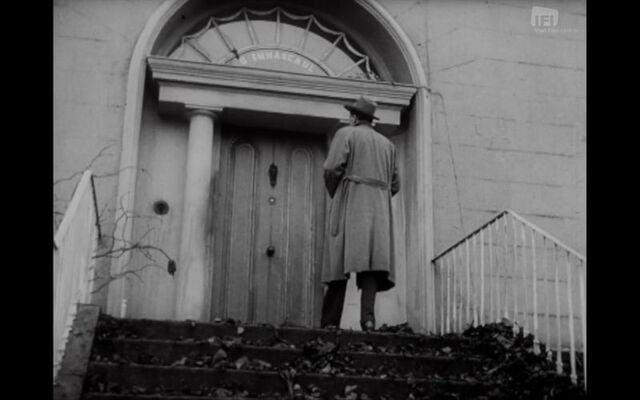
\"Return to Glennascaul.\""Return to Glennascaul."
Irish Film Institute The 1951 short film "Return to Glennascaul" - now available to stream for free via the Irish Film Institute's IFI Archive Player - will get you in the mood for Halloween.
When Orson Welles offers a stranger with car trouble a lift, his passenger recalls a haunting event that spooks and intrigues the driver.
The film opens as Orson Welles interrupts his filming of "Othello" (in which he performed alongside his old friends Micheál Mac Liammóir and Hilton Edwards) to present a "short story from the haunted land of Ireland."
At a crossroads in the foothills of the Dublin mountains, Welles picks up a stranger who is having car trouble. The stranger tells of an encounter a year earlier at that very same spot with a young woman and her mother who signalled for him to stop. He offered to drive them home to their house, Glennascaul, and upon arrival, was invited in for a glass of whiskey.
After a pleasant visit, he left, but upon return later that night, he found the house deserted. The next day, he learns that his crossroads encounter had been a ghostly one.
"Return to Glennascaul" is part of the Irish Film Institute's Oscar® Collection: A Selection of Irish Academy Award® Nominated Short Films. It was nominated for an Academy Award® for Best Short Subject in 1953.
IFI recommends an audience of 8 years old and older for "Return to Glennascaul."
The Irish Film Institute's Oscar® Collection
A great short film, like a great short story, conjures worlds with clarity and economy, bringing viewers on journeys that are brief but deeply engrossing. Since the 1950s, Irish filmmakers have mastered the short film form and secured international recognition with an impressive array of awards including many Academy Award® nominations and victories. Popularly known as the Oscars, the awards are the most famous and prestigious in the entertainment industry.
This collection brings together a selection of these award-winning films – ghostly tales and pitch-black comedies, illuminating documentaries, and exquisite animations – populated by an array of famous folks such as Seán O’Casey, Orson Welles, Fionnula Flanagan, and Brendan Gleeson. The films, directed and written by Irish men and women, date from 1951 to 2018.
The Oscar® Collection: A Selection of Irish Academy Award® Nominated Short Films is drawn from material preserved in the IFI Irish Film Archive.
This programme is supported by the Government of Ireland through the National BCP Network.
"Return to Glennascaul" is published here thanks to the Irish Film Institute (IFI), who IrishCentral has partnered up with to bring you a taste of what their remarkable collection entails. You can find all IrishCentral articles and videos from the IFI here.
To watch more historic Irish footage, visit the IFI Archive Player, the Irish Film Institute’s virtual viewing room that provides audiences around the globe free, instant access to Irish heritage preserved in the IFI Irish Film Archive. Irish Culture from the last century is reflected through documentaries, animation, adverts, amateur footage, feature films, and much more. You can also download the IFI Archive Player App for free on iPhone, Android, Apple TV, Amazon Fire TV, and Roku.
IrishCentral has partnered up with the IFI to bring you a taste of what their remarkable collections entail. You can find all IrishCentral articles and videos from the IFI here.

![]()
Tommy Mac here....Not all the news items can be samhain related....
Catherine Connolly officially elected 10th President of Ireland
The independent candidate, who was backed by a number of left-wing parties, beat Fine Gael’s Heather Humphreys comfortably by 63.3% to Ms Humphreys’ 29.5%.
Philip Downes @Extra.ie Oct 25, 2025

Catherine Connolly has been elected the 10th President of Ireland. RollingNews.ie
Catherine Connolly has been elected the 10th President of Ireland.
The independent candidate, who was backed by a number of left-wing parties, beat Fine Gael’s Heather Humphreys comfortably by 63.3% to Ms Humphreys’ 29.5%.
Jim Gavin, who was set to run on the Fianna Fáil ticket before sensationally withdrawing from the race, still received a number of votes since he was still on the ballot due to a technicality — with him ending up with 7.2% of the vote. S
The number of spoiled votes was also unprecedented compared to previous elections, with 213,738 of the votes being spoiled. Some of the boxes in some constituencies, particularly in parts of Dublin where Ms Humphreys was expected to do well, had more spoiled votes than votes for her — but Ms Connolly ended up the winner in those constituencies.
Ms Humphreys conceded the election to Ms Connolly shortly after 2pm as counts continued, with her congratulating Ms Connolly on her victory. October 25,2025:
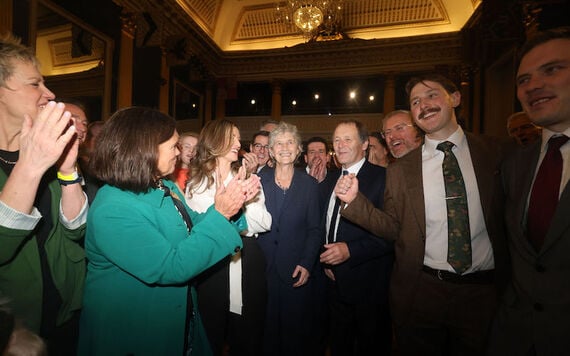
Independent winning presidential candidate supported by a united left alliance Catherine Connolly with Sinn Fein and Labour Party leaders Mary Lou McDonald and Ivana Bacik while arriving in Dublin Castle after today's victory. (RollingNews.ie)
Speaking on her campaign, which saw her questioned about fox-hunting and her husband’s ties to the Orange Order, Ms Humphreys said that she has ‘not one regret’ about her campaign — and said that Ms Connolly would be ‘a President for all.’
‘Catherine will be a president for all of us and she will be my president and I really would like to wish her all the very, very best,’ Ms Humphreys said. ‘I have no regrets, I stepped up the plate. Absolutely not one regret and I’m glad I did it.’
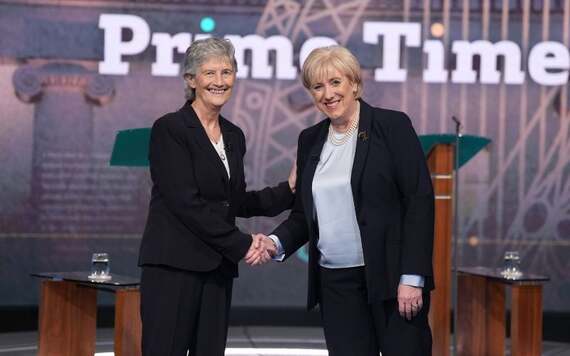
Presidential candidates Catherine Connolly and Heather Humphreys on RTE's "Prime Time". (RollingNews.ie)
Since she’ll be going back to retirement from politics — having come out of retirement to contest the election, Ms Humphreys said ‘I’m very fond of my garden… and I have a seven-week-old grandson I haven’t seen enough of.’
Ms Connolly was endorsed by a number of left-wing parties, including Sinn Féin, the Social Democrats, Labour and People Before Profit.
Ms Humphreys was chosen as the candidate for Fine Gael following the withdrawal of Mairead McGuinness on health grounds, with her beating second favourite Seán Kelly in the contest to select the candidate for Fine Gael.
Despite rumours that Billy Kelleher and former Taoiseach Bertie Ahern would fly the flag for Fianna Fáil, Micheál Martin’s party chose former Dublin manager and five-in-a-row winner Jim Gavin as their candidate.
However, he sensationally withdrew from the race following controversy over his failure to repay a tenant from 2009 who accidentally sent him €3,300.
Despite Mr Gavin’s withdrawal from the race, he remained on the ballot as it was too late to take him off.
* This article was originally published on Extra.ie.

![]()
Irish American org slams acquittal of Bloody Sunday's Soldier F
The AOH says that, following the acquittal of Soldier F, it will continue to stand by the Bloody Sunday families as they continue their fight for legacy truth.
IrishCentral Staff @IrishCentral Oct 24, 2025
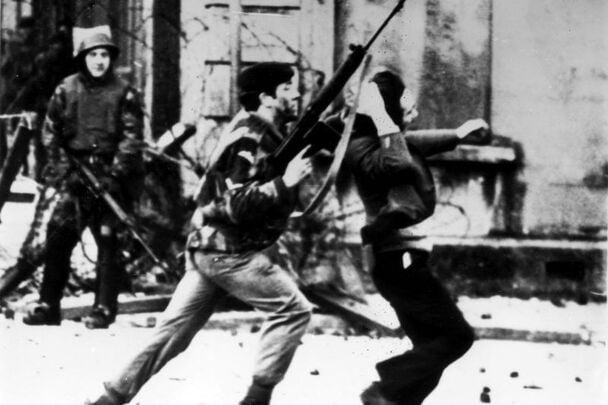
January 30, 1972: An armed soldier attacks a protester on Bloody Sunday when British Paratroopers shot dead 13 civilians on a civil rights march in Derry City. Getty Images
The Ancient Order of Hibernians (AOH), the oldest and largest Irish Catholic group in the US, has responded to this week's verdict for Soldier F, the former British paratrooper accused of two murders and an additional five attempted murders in Derry on Bloody Sunday in 1972.
On Thursday, Soldier F was found not guilty of murdering James Wray and William McKinney, as well as not guilty of the attempted murder of five other people - Joseph Friel, Joseph Mahon, Michael Quinn, Patrick O’Donnell, and another unknown person.
Believed to be in his mid-70s, Soldier F had pleaded not guilty and did not testify during the non-jury trial that began in Belfast in September.
In his verdict on Thursday, Judge Patrick Lynch said: "The evidence presented by the Crown falls well short of this standard and signally fails to reach the high standard of proof required in a criminal case; that of proof beyond a reasonable doubt."
Judge Lynch, however, did say that Soldier F, as well as Soldiers G, H, and E, "had totally lost all sense of military discipline" on Bloody Sunday.
He added: "Those responsible should hang their heads in shame.”
Martin Galvin, the National Freedom for All Ireland Chair of the AOH, released the following statement on Friday in reaction to the verdict:
“The Ancient Order of Hibernians is saddened but not surprised at yesterday’s acquittal of British Trooper F, which means that no one will be found guilty for the murders of 14 civil rights marchers committed in front of thousands of eyewitnesses and many cameramen on January 30th, 1972.
"The verdict was the inevitable result of high-level planning by British officials and military commanders, who always intended to ensure impunity for those they sent out to teach Derry a lesson by gunning down civil rights marchers.
"Indeed, British officials merely followed the same tactics they had used to get away with the murder of a Catholic priest, a grandmother, and eight others, in the Ballymurphy Massacre of August 9-11, 1971.
“Judge Patrick Lynch was scathing in his verdict, holding the Bloody Sunday troopers were clearly guilty of ‘Shooting in the back unarmed civilians fleeing from them… Those responsible should hang their heads in shame.’
“It was noteworthy that former British troopers outside the courtroom, instead of shame, displayed annoyance that Soldier F or any British trooper should ever face prosecution merely for murdering Irish civil rights marchers.
“The judge felt constrained to acquit only because there was no reliable evidence identifying Trooper F as the shooter who murdered two men and attempted to murder five others. The only identification evidence introduced came from out-of-court statements by two other Troopers, who themselves had been part of the murder spree.
“The whitewash of Bloody Sunday started even before the blood in the streets was dry. Troopers were questioned only to make up excuses justifying each murder. Cover stories about nail bombs and shots fired by the victims were concocted. No inculpatory forensic evidence was taken.
"The Widgery Tribunal was held to rubber-stamp the murders. Commander Derek Wilford was honored with an Order of the British Empire. “None of this was enough to stop the heroic family and friends of the Bloody Sunday victims. They marched, lobbied, and campaigned for justice, supported by the AOH among many others. It took decades, but they got vindication at the Saville Inquiry and an apology from British Prime Minister David Cameron.
"Ultimately, they got one of the troopers into the dock, charged with murder, although the 53-year cover-up blocked sufficient identification evidence for a conviction.
“The AOH has had a longstanding relationship with the Bloody Sunday families. We congratulate them for having endured all British efforts to deny them justice and delay until they had given up their quest for the truth. These families never gave up. They have overcome every obstacle.
“As we have for decades, the AOH will support the Bloody Sunday families as they take the next steps in their fight for justice, and we will stand with all victims’ relatives as they continue their fight for legacy truth.”
........................................................................................................................
Tommy Mac here....Want to learn mor about "Bloody Sunday"? Click here

![]()
A Little Humor 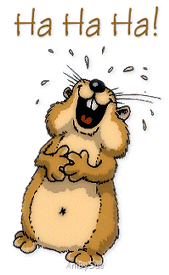

Amazon Echo for Seniors
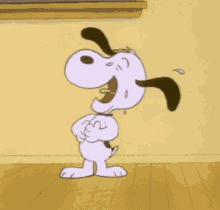

![]()
Times when you might be excused for using foul language


![]()
Funny Headlines
*The Times:
A young girl who was blown out to sea on a set of inflatable teeth
was rescued by a man on an inflatable lobster.
A coastguard spokesman commented,
'This sort of thing is all too common.'
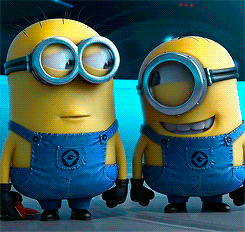

![]()
"Funny Statue Photos"



![]()
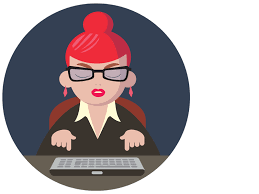
Church Bloopers

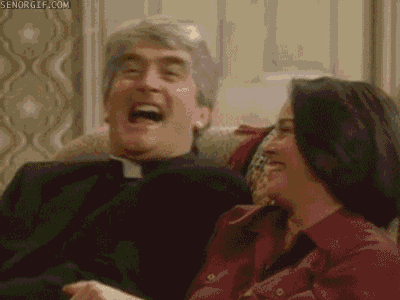
![]()
From my wife Donna



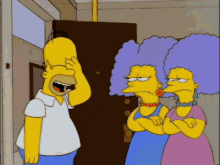
![]()
Many News items, stories, recipies, jokes and poems are taken from these sites with their generous permission.
Please support them my clicking on the links below and sign up for their free newsletter.
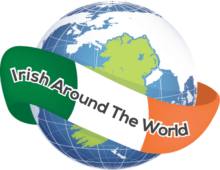 .....
..... ....
....
Subscribe
to IrishCentral  ..
.. ....
....

 .........
.........![]() ......
......
![]()
Welcome to
Tír na mBláth
(Land of Flowers)
Tír na mBláth is one of hundreds of branches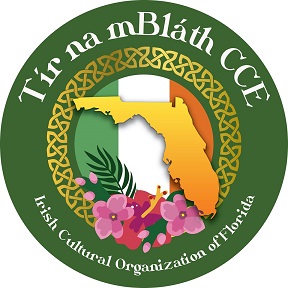 throughout the world of Comhaltas Ceoltóirí Éireann (CCÉ) pronounced "kol-tus
kyol-tori air-in", the largest group involved in the preservation of
Irish music, dance and song.
throughout the world of Comhaltas Ceoltóirí Éireann (CCÉ) pronounced "kol-tus
kyol-tori air-in", the largest group involved in the preservation of
Irish music, dance and song.
Our board and membership is made up of Irish, Irish descendants, and all those who support, celebrate and take pride in the preservation of Irish culture.
We also aim to promote good will and citizenship.
Interested in belonging to Tír na mBláth? Feel free to download our membership form
Facebook page is at Tír na mBláth
Our meetings and several events are held at Tim Finnegan's Irish Pub in Delray Beach Florida.
![]()
Well, that's it for this week.
Slán abhaile
Pronunciation: slawn a-wol-ya
Meaning: Safe Home
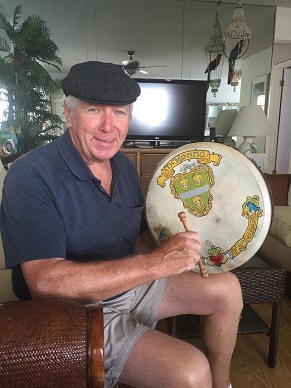
Sláinte,
Tom Guldner (Tommy Mac)
Slán agus beannacht, (Good-bye and blessings)
Fireny@aol.com
Number of visitors to this website since Sept 2022
..